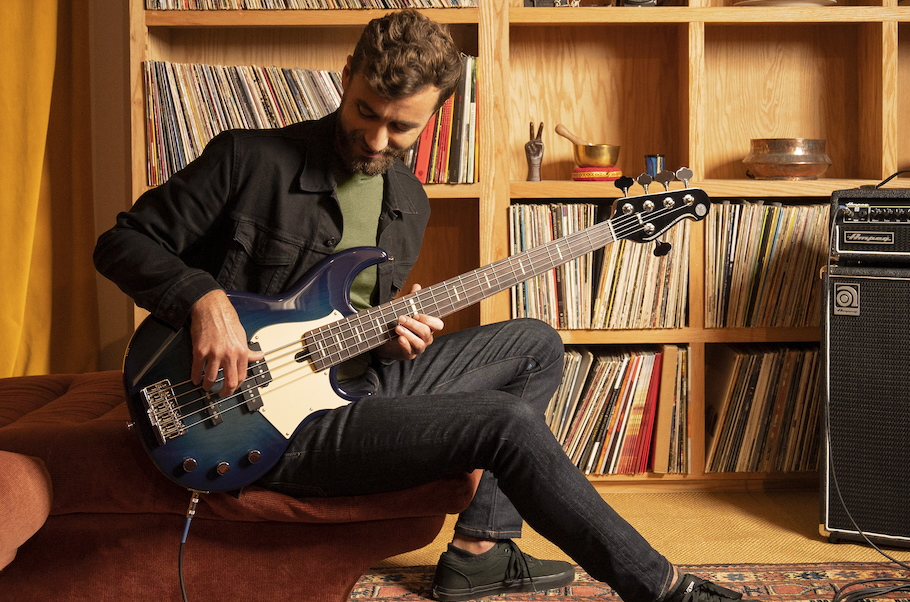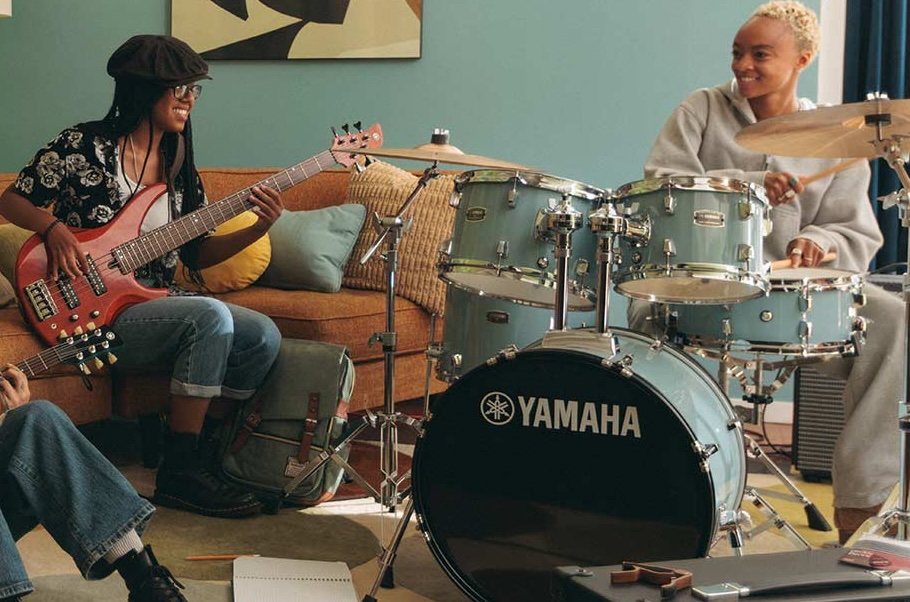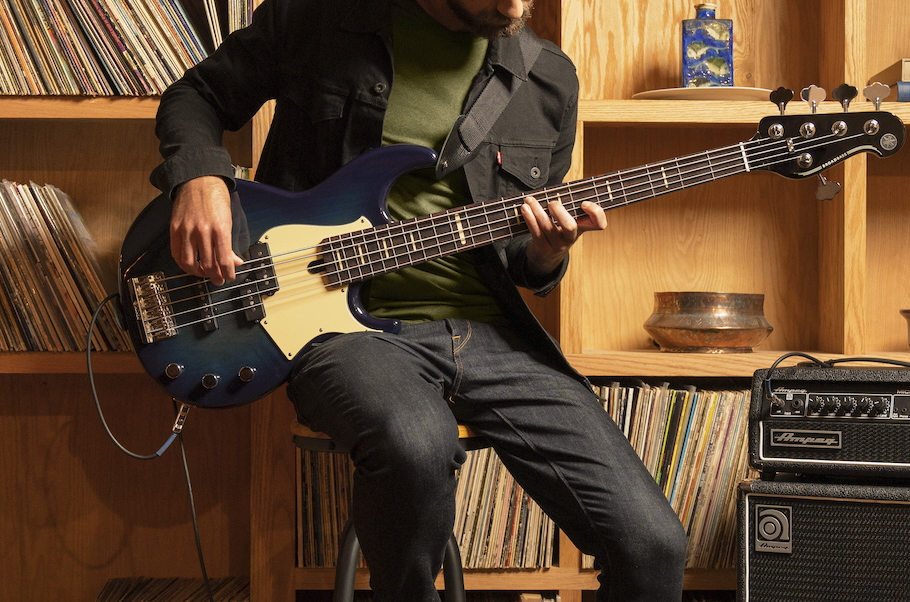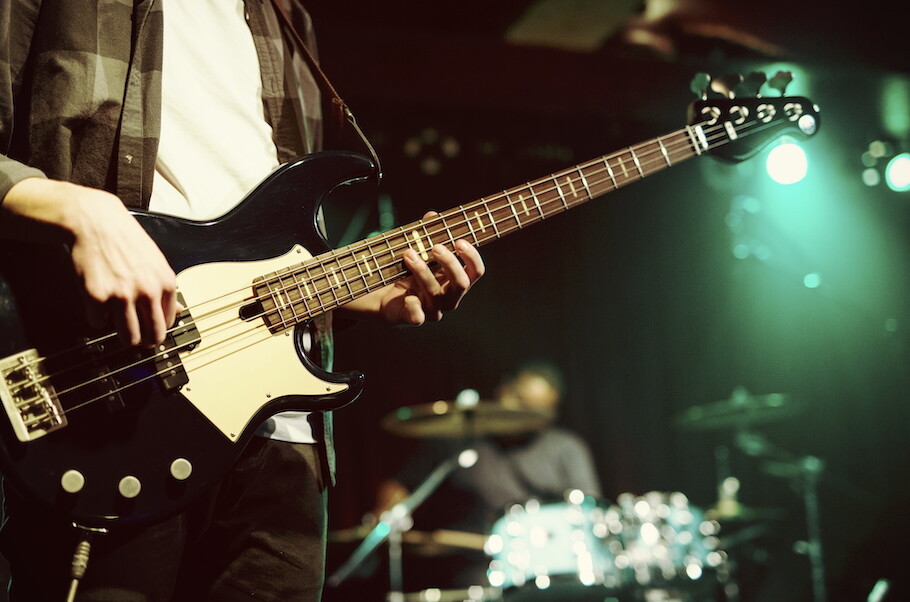How to Choose Your First Bass
There’s never been a better time to jump into the low end.
Congratulations on deciding to buy your first bass! There’s never been a better time to jump into the low end. No matter what style of music you want to play, there are tons of resources to help you get started — and plenty of solid, versatile instruments for every budget.
If you’re reading this, you’ve already begun the first step toward getting a new instrument: research. The internet contains an ocean of opinions about every facet of bass, some more trustworthy than others, but the facts — dimensions, colors, options, weight, prices — are easy to find, too. Besides visiting retailers, reading bass magazines, and checking out online forums, be sure to talk to your bass-playing friends, who most likely have thoughts about what’s hot and what’s not. YouTube, of course, is always useful when it comes to seeing and hearing an instrument you’re interested in.
IN YOUR HANDS
That said, the truth is that you won’t know if a bass is right for you until it’s in your hands. Visiting your local music stores to play the basses they have on display can be an important first step toward owning a great first instrument.

Here are some important questions to ask yourself as you consider whether the bass you’re trying out is the right one for you:
- Is the neck the right size and shape for your hand?
- Does the instrument feel too heavy or too light when you stand?
- Does it balance well on your knee when you sit?
- Does the bass’s control layout work for you?
- Is the bass correctly intonated? (That is, do some notes sound slightly sharp or flat of what they should be?) This is something that can be easily checked with a tuner, and will be more apparent as you play higher up the neck. Poor intonation can sometimes be fixed with a correct setup, but not always, so it’s a potential red flag.
Keep in mind that basses that have been hanging in a music store and played day in and day out may sometimes need a setup to return to the optimum playing condition in which they left the factory. If the gap between the strings and the frets is uncomfortably high, for example, it could indicate that spending days, weeks, or months in the store’s fluctuating temperature has affected the neck — another potential red flag. It’s also not uncommon for a bass that’s been on display for awhile and played by many hands to have dead strings, finger grime, and dust. If you’re excited about an instrument but concerned about wear and tear, talk to a salesperson. You can also ask if the store can include a setup and/or fresh set of strings when you buy the bass.
MAKING THE TRANSITION FROM GUITAR TO BASS
Guitarists who pick up a bass for the first time will immediately notice that the necks are longer and the strings are fatter. The scale length of an electric guitar — the distance between the bridge and the nut — is usually between 24″ and 26″, but with electric bass, 34″ – 35″ is standard.
Electric guitars are strung with much thinner strings than bass, with the thickest typically being a .042 E string, while a standard EADG set for bass consists of a .100 or .105 E, an .085 A, a .065 D and a .045 G. Guitarists might therefore want to opt to substitute light- or even extra-light gauge strings on their bass, at least at first until sufficient finger strength is achieved, but just know that this comes at a sacrifice in terms of beefiness and low-end thud. And if you feel attached to using a pick, just know that some bassists use them and some don’t, but most agree that learning to play with your fingers is crucial.
FOCUS ON SONICS, NOT JUST LOOKS
The look and feel of a particular bass may be what immediately attracts you, but it shouldn’t be the end of your decision-making process. Sound is extremely important too — maybe even more so! Once you find a bass that captures your interest, try playing it through different amps so you can hear its unique voice. See if the knobs and tuners turn easily. Do you hear crackling or static when you twist the knobs or plug in a cable? This would suggest a problem with the electronics, and could be cause for concern.
Another thing to listen for is consistency in tone and volume. Do some notes buzz or sound significantly louder or softer than others, even when played with equal intensity? This could indicate a potential issue with the basic construction of the instrument, or it could be a simple fix that can be easily rectified with a setup. Either way, it’s worth having a discussion with the salesperson.
FINDING THE PERFECT STARTER BASS
Price, of course, is always a major consideration when it comes to choosing your first bass — or when making any purchase, for that matter. It used to be that, when it came to musical instruments, you got what you paid for, but the good news is that advances in technology mean that you can find high-quality starter basses today, such as the very affordable Yamaha TRBX line.

As an example, the TRBX174EW 4-string model is light in weight (just around 7 lbs.) yet solidly built, and it sounds great too. The three knobs — a volume control for each of the two pickups, plus a master tone control — are straightforward and make it easy to dial in the meat-and-potato tones every bass player is expected to have. The neck is slim — a bonus for guitarists looking to make the transition to bass — with access all the way up to the 24th fret, so it’s easy to reach those high notes. Adjustments you’ll have to occasionally make (such as tweaking the truss rod) are simple, and it comes strung with standard-gauge D’Addario nickel strings, which are ubiquitous precisely because they work for most styles. The TRBX174EW is also handsome, small-bodied and travel-friendly, as well as genre-agnostic: It doesn’t feel designed to cater to a particular era, style or trend.
Many of the greatest bass players began on instruments that were less than ideal by today’s standards, but your first bass will likely be far better built and more versatile than any starter bass they used. As recently as just a few years ago, many experts would have suggested that a first-time bassist should consider buying a used instrument to save money, but that’s no longer the case. In terms of price-to-performance ratio, we live in a golden age of musical instrument possibilities … and that’s good news for aspiring bassists everywhere!














